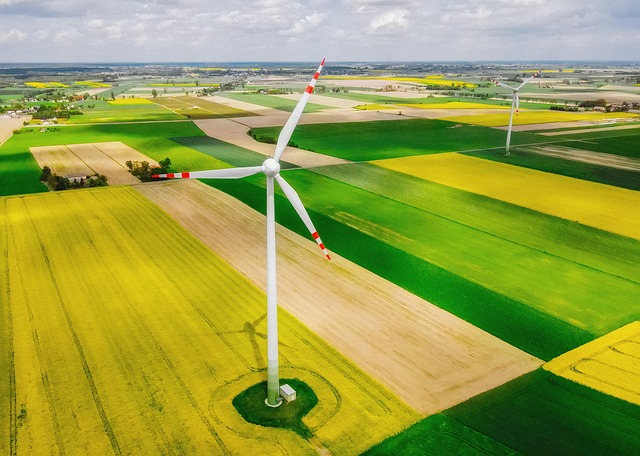
Clean Energy Innovations: Shaping a Greener Future
The global landscape is undergoing a transformative shift in the wake of climate change, energy crises, and the urgent need for sustainability. As we stand at the crossroads of energy consumption and environmental stewardship, clean energy innovations emerge as a beacon of hope in the quest for a greener future. This article delves into the various advancements in clean energy technologies, their implications, and how they are shaping our world.
The Need for Clean Energy
Fossil fuels have powered industrialization and economic growth for over a century. However, the environmental costs of this reliance are becoming increasingly untenable. Climate change, marked by rising temperatures, unpredictable weather patterns, and increased natural disasters, underscores the necessity for a shift to sustainable energy sources.
Pollution from fossil fuel combustion is now a leading cause of health problems worldwide. Additionally, geopolitical tensions often surround oil and gas, leading to market volatility and energy insecurity. In contrast, clean energy sources, including wind, solar, hydroelectric, and geothermal power, offer a sustainable alternative that promises not only environmental benefits but also economic opportunities and energy independence.
Solar Energy Innovations
Solar energy, harnessed from the sun’s rays, is one of the most abundant and accessible forms of clean energy. Recent innovations have made significant strides in efficiency, affordability, and application. Advanced photovoltaic (PV) technologies have emerged, with solar panels now converting up to 23% of sunlight into electricity. Bifacial solar panels, which capture sunlight from both sides, are further increasing energy generation.
In addition, solar energy storage solutions are maturing, enabling the capture of excess energy for use during non-sunny periods. The development of more efficient battery technologies, such as lithium-sulfur and solid-state batteries, promise longer life spans and greater capacity for energy storage, facilitating the transition to a solar-powered society.
Wind Energy Developments
Wind energy has established itself as a formidable player in the renewable energy landscape, particularly in regions with consistent wind patterns. Innovations in turbine technology have led to larger, more efficient turbines that can generate electricity even in low-wind conditions. Horizontal-axis wind turbines dominate the market, but vertical-axis turbines are gaining traction for their efficiency and adaptability in urban settings.
Offshore wind farms have also revolutionized wind energy production. These installations take advantage of stronger and more consistent winds found at sea and contribute to significant energy outputs. Advances in floating turbine technology are making it feasible to harness wind energy in deeper waters, opening up new avenues for clean energy generation.
Hydroelectric Power Management
Hydroelectric power, generated through the movement of water, remains one of the most established forms of clean energy. Innovations in micro-hydropower systems are making this technology more scalable and accessible, allowing communities in remote areas to harness local water sources for energy. These systems provide a sustainable solution that requires minimal infrastructure while delivering reliable energy.
Moreover, the focus on environmental sustainability has driven innovations in hydroelectric power management. Fish-friendly turbine designs and improved water flow systems minimize ecological disruption and promote biodiversity. As society grapples with energy production’s environmental impact, such innovations are essential in balancing energy needs with ecological preservation.
Geothermal Energy Advances
Geothermal energy, derived from the Earth’s internal heat, is a reliable and potent source of clean energy. Recent advancements have enhanced geothermal systems (EGS) that can extract energy from areas previously thought unusable. Enhanced geothermal technology involves injecting water deep into the ground to access hot rocks, creating steam that can drive turbines for electricity generation.
These developments not only improve efficiency and output but also allow for geothermal energy production in diverse locations, expanding its potential application beyond volcanic areas. Harnessing geothermal energy requires less land than solar and wind and can provide a consistent energy supply, overcoming the intermittency issues associated with other renewables.
The Role of Energy Storage
As reliance on renewable energy sources increases, so does the significance of energy storage solutions. Energy storage technologies, including batteries, pumped hydro storage, and thermal energy storage, are crucial for managing supply and demand, particularly in variable renewable energy systems.
Recent advancements in energy storage include innovative battery technologies that significantly increase energy density, charging speeds, and longevity. Flow batteries and lithium-silicon batteries are just a few examples of how innovations are moving toward more sustainable and efficient storage solutions. The integration of AI and smart grid technology in energy storage and management allows for more precise balancing of supply and demand, optimizing energy distribution across the grid.
Electric Vehicles and Sustainable Transportation
The transportation sector is one of the largest contributors to greenhouse gas emissions. However, innovations in electric vehicles (EVs) signal a significant shift toward greener transportation solutions. The proliferation of EVs, supported by enhancements in battery life and charging infrastructure, is reshaping urban mobility.
Advancements in charging technology, including fast-charging stations and wireless charging systems, are making EVs more convenient and appealing to consumers. Furthermore, the advent of autonomous electric vehicles could revolutionize transportation, optimizing traffic efficiency and reducing emissions through improved logistics and sharing economy models.
Hydrogen Fuel Cells
Hydrogen fuel cells represent another promising avenue for clean energy. While hydrogen has been utilized as an energy source for decades, recent innovations are unlocking its potential for broader applications in transportation, industry, and power generation. Hydrogen can be produced through various methods, including electrolysis powered by renewable energy sources, making it a versatile and clean fuel option.
Fuel cells convert hydrogen into electricity, emitting only water vapor, thus providing a clean alternative to traditional combustion engines. The advancements in fuel cell technology have significantly reduced costs and improved efficiency, bringing hydrogen closer to mainstream energy solutions. Additionally, hydrogen storage and transport technologies are advancing, making it feasible to integrate hydrogen into existing energy systems.
Policy and Economic Implications
The transition to clean energy is not only a matter of technological innovation but also requires supportive policies and economic frameworks. Governments and organizations worldwide are increasingly recognizing the urgency of sustainable energy strategies. Policies promoting renewable energy investments, carbon pricing, and subsidies for clean technology are essential for driving innovation and adoption.
Moreover, the economic implications of the clean energy transition are profound. Renewable energy sectors are labor-intensive, creating millions of jobs in manufacturing, installation, and maintenance. As fossil fuel industries decline, a focus on retraining programs and workforce transition strategies becomes imperative, ensuring that workers can transition to emerging clean energy sectors.
Challenges and the Path Ahead
Despite the rapid advancements in clean energy innovations, several challenges must be addressed to realize a sustainable energy future. The intermittency of renewable energy sources necessitates the development of reliable energy storage solutions and grid management technologies. Additionally, the initial investment cost for renewable energy infrastructure can be a barrier for many regions, requiring innovative financing models and international collaboration.
Public awareness and acceptance also play a critical role in the transition to clean energy. Educating communities about the benefits of sustainable energy solutions is vital in fostering support for renewable projects and technologies. Moreover, collaboration between governments, private sectors, and academia will drive research and development, propelling clean energy innovations forward.
Conclusion
The landscape of clean energy innovations is ripe with potential, offering solutions that promise not only to mitigate climate change but also to foster economic growth and energy independence. As technology continues to evolve, it is critical that societies embrace these advancements while addressing the associated challenges. The journey toward a cleaner, greener future will require collective effort, from individuals to governments, to harness the power of clean energy for generations to come.
As we navigate this energy revolution, bold visions paired with innovative technologies can and will pave the way toward a sustainable planet, demonstrating that a greener future is within our grasp.


